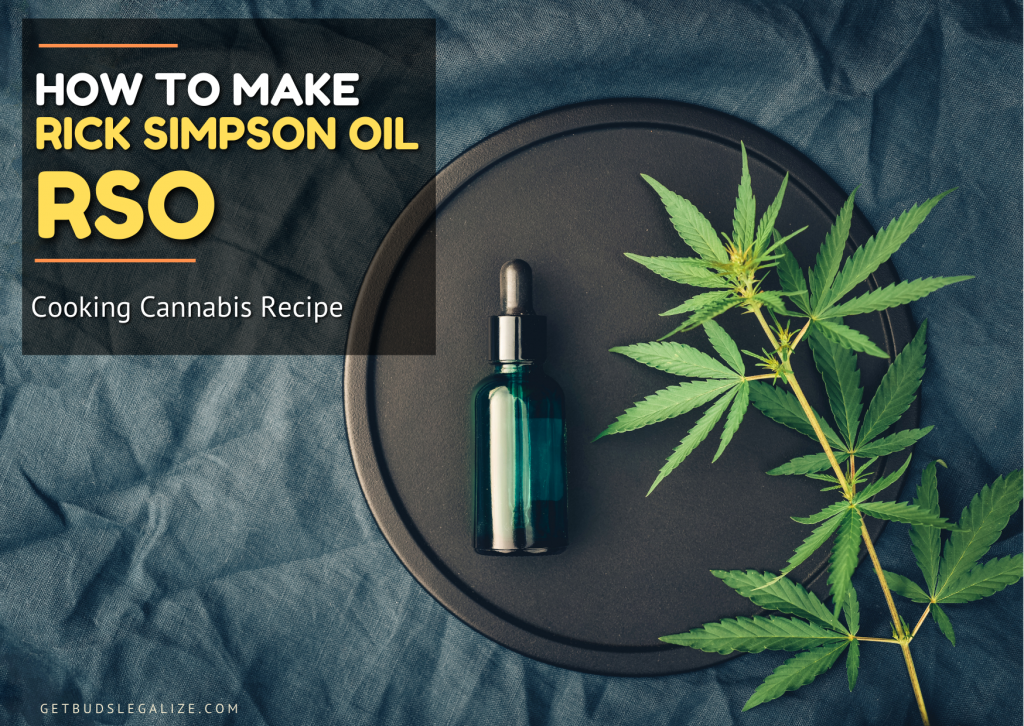RSO Oil Recipe: How to Make THC Cannabis Oil Step by Step
RSO, or Rick Simpson Oil, is a marijuana extract that has been used to treat various medical conditions, such as cancer, chronic pain, epilepsy, and more; And is made by extracting essential oils and cannabinoids from the cannabis plant using a solvent, such as ethanol or isopropyl alcohol.
The solvent is then evaporated, leaving behind a thick, dark oil that contains a high concentration of THC and other beneficial compounds. However, this process can be dangerous and should be done with caution.
In this blog post, I’ll show you how to make RSO oil at home using simple ingredients and equipment; benefits, side effects, and ways to use it safely.
What Are the Potential Benefits of Rick Simpson Oil?
Some of the potential benefits of using RSO are:
- Relieve pain and inflammation by interacting with the endocannabinoid system, which regulates various bodily functions, such as sleep, appetite, and immune response.
- Reduce stress and anxiety by affecting serotonin levels, which are neurotransmitters that influence mood and behavior.
- Improve sleep quality by inducing relaxation and calming the nervous system.
- Help treat skin conditions, such as acne and eczema, by having anti-inflammatory and anti-microbial properties, as well as nourishing and moisturizing the skin.
- Protect the heart by preventing cardiovascular diseases, such as atherosclerosis, heart attacks, and strokes, by having antioxidant and anti-inflammatory effects.
- Stimulate the appetite by increasing hunger hormones, such as ghrelin, which can help people with conditions that cause weight loss, such as cancer or HIV/AIDS.
- Have anti-cancer effects by inhibiting tumor growth and inducing apoptosis, which is the programmed cell death of abnormal cells.
- Asthma: RSO may help improve lung capacity by relaxing the bronchial muscles and reducing airway resistance.
- Multiple Sclerosis: RSO may help reduce spasticity, tremors, and pain associated with multiple sclerosis by modulating the immune system and protecting the nerve cells.
Rick Simpson’s oil is a promising natural remedy for many ailments, but it should be used with caution and under medical supervision.
Does RSO Have Side Effects?
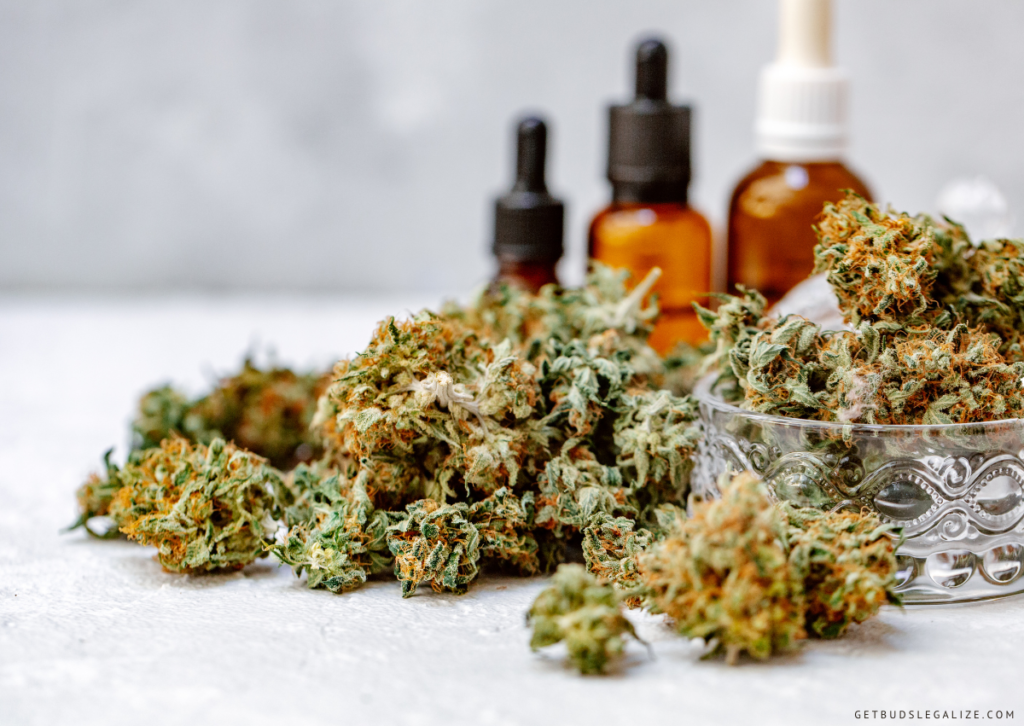
RSO is often used by people suffering from various conditions, as an alternative or complementary treatment. However, RSO can also have some side effects that users should be aware of before using it.
Some of the possible side effects of RSO are:
- Drowsiness: RSO can make you feel sleepy or sedated, especially if you take a large dose or use it with other drugs that have similar effects. This can impair your ability to drive, operate machinery, or perform other tasks that require alertness.
- Anxiety: RSO can also cause anxiety, paranoia, or panic attacks in some people, especially if they are not used to high-THC products or have a history of mental health issues. This can be very distressing and may require medical attention.
- Increased heart rate: RSO can increase your heart rate and blood pressure, which can be dangerous if you have a heart condition or other cardiovascular problems. This can also increase your risk of having a heart attack or stroke.
- Dry mouth: RSO can cause dry mouth, which can lead to dehydration, bad breath, tooth decay, and gum disease. It is important to drink plenty of water and maintain good oral hygiene when using RSO.
- Impaired memory: RSO can affect your short-term and long-term memory, making it harder to recall information or learn new things. This can affect your academic or professional performance and your personal relationships.
- Tolerance and dependence: RSO can cause tolerance and dependence over time, meaning that you need more of it to achieve the same effects or to avoid withdrawal symptoms. This can lead to addiction and health problems.
These are some of the potential side effects of RSO, but they may not affect everyone in the same way. Some people may experience more or less severe effects depending on their dosage, frequency of use, body chemistry, medical history, and other factors.
Which Cannabis Strains Are the Best to Use for Making Rick Simpson Oil?

There is no definitive answer to which strains are the best, as different strains may have different effects on different people. However, some general factors to consider are:
• The THC Level:
RSO is supposed to have a high THC level, so choosing strains that are high in THC may result in a more potent oil. However, higher THC levels may also increase the risk of side effects, such as anxiety, paranoia, and increased heart rate. Therefore, some people may prefer strains that have a balanced ratio of THC and CBD, which may counteract some of the negative effects of THC.
• The Terpene Profile:
Terpenes are aromatic compounds that give cannabis its distinctive smell and flavor. They may also have some therapeutic benefits, such as anti-inflammatory, anti-anxiety, and anti-nausea properties.
Some common terpenes found in cannabis are myrcene, limonene, pinene, linalool, and caryophyllene. Depending on the desired effects of RSO, choosing strains that have certain terpenes may enhance its efficacy and enjoyment.
• Personal Preference:
Ultimately, the best strain to use for making RSO depends on the individual’s preference and tolerance. Some people may prefer strains that have a fruity, citrusy, or floral aroma and flavor, while others may like strains that have an earthy, spicy, or woody scent and taste. Some people may also have a higher or lower tolerance to THC than others, which may affect how they react to RSO oil.
Some examples of strains that are high in THC are:
Some examples of strains that have a balanced ratio of THC and CBD are
- Harlequin
- Cannatonic
- ACDC
- Pennywise
Some examples of strains that have different terpene profiles are
- Blue Dream
- Sour Diesel
- Pineapple Express
- Granddaddy Purple
Can I Make CBD Rick Simpson Oil?
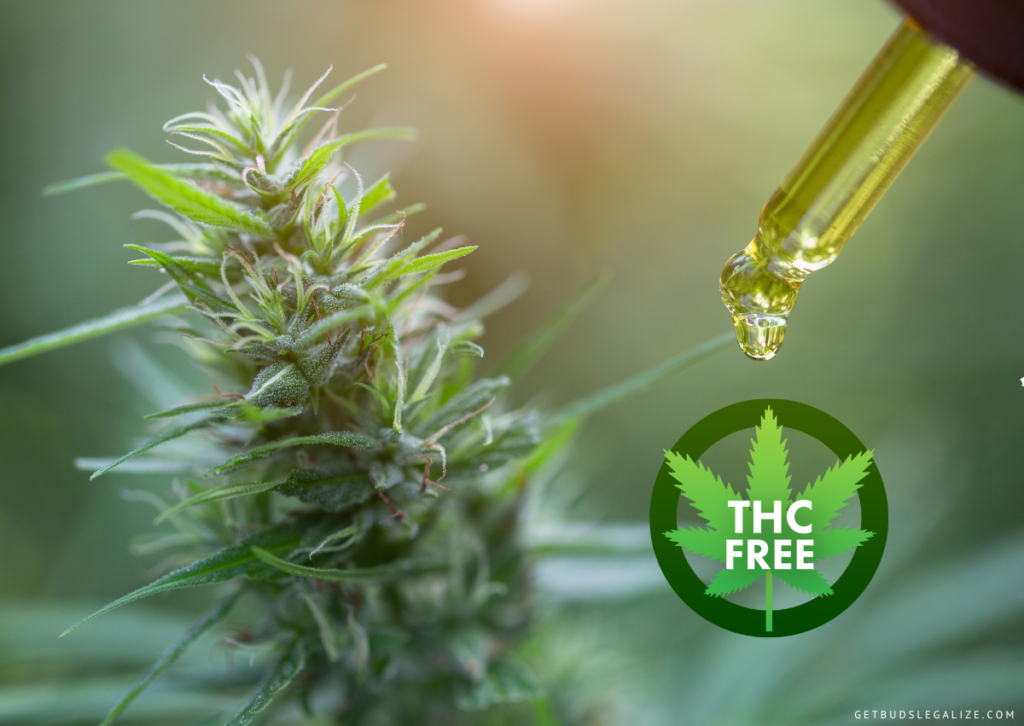
The answer is yes, but there are some important considerations to keep in mind before attempting to do so.
First of all, making RSO Oil with CBD may not have the same effects as making it with THC. CBD and THC have different interactions with the endocannabinoid system, which is a network of receptors and molecules that regulate various bodily functions such as mood, appetite, pain, and immunity.
THC binds directly to the CB1 and CB2 receptors, which are mainly found in the brain and immune system respectively. CBD does not bind directly to these receptors but rather influences their activity indirectly by modulating other enzymes and receptors. CBD also has a higher affinity for other receptors such as serotonin, adenosine, and vanilloid, which are involved in mood regulation, sleep quality, and pain perception.
Second, RSO CBD oil may not produce the same psychoactive effects as THC, such as euphoria, relaxation, and appetite stimulation. CBD may also counteract some of the negative effects of THC, such as paranoia, anxiety, and memory impairment. However, CBD may also enhance some of the therapeutic effects of THC, such as pain relief, anti-inflammation, and anti-tumor activity.
The ratio of CBD to THC in your RSO will determine how you experience its effects. A high-CBD RSO may have more subtle and balanced effects than a high-THC RSO. A 1:1 ratio of CBD to THC may offer a synergistic effect that combines the benefits of both compounds without causing too much impairment or side effects.
What Is the Best Solvent to Use for Making RSO?
There are many different solvents that can be used for this process, but some are more suitable than others. Here are some factors to consider when choosing a solvent to use:
• Safety:
The solvent should be non-toxic and non-flammable, or at least have a high flash point and low boiling point. Some solvents, such as butane or hexane, are highly flammable and explosive and can pose a serious fire hazard if not handled properly. Other solvents, such as acetone or isopropyl alcohol, are toxic and can cause health problems if ingested or inhaled. The safest solvents to use are food-grade ethanol or grain alcohol, which are both edible and have a high flash point and low boiling point.
• Purity:
The solvent should be pure and free of any contaminants or additives that could affect the quality or potency of the RSO. Some solvents, such as naphtha or petroleum ether, may contain impurities or residues that could be harmful or reduce the medicinal value of the RSO. The purest solvents to use are food-grade ethanol or grain alcohol, which are both distilled and filtered to remove any impurities.
• Efficiency:
The solvent should be able to dissolve the maximum amount of cannabinoids and terpenes from the plant material without extracting unwanted substances such as chlorophyll or waxes. Some solvents, such as water or glycerin, are not very efficient at extracting cannabinoids and terpenes and may result in a low-yield or weak RSO. The most efficient solvents to use are food-grade ethanol or grain alcohol, which are both polar and non-polar, meaning they can dissolve both water-soluble and fat-soluble compounds from the plant material.
So, based on these factors, the best solvent to use is food-grade ethanol or grain alcohol. It’s safe, pure, and efficient, and can produce a high-quality and potent extract. However, it’s also more expensive and harder to find than other solvents, so some people may opt for cheaper or more accessible alternatives. In that case, it is important to follow proper safety precautions and quality control measures when making RSO with other solvents.
RSO Oil Recipe: Preparation Step-by-Step
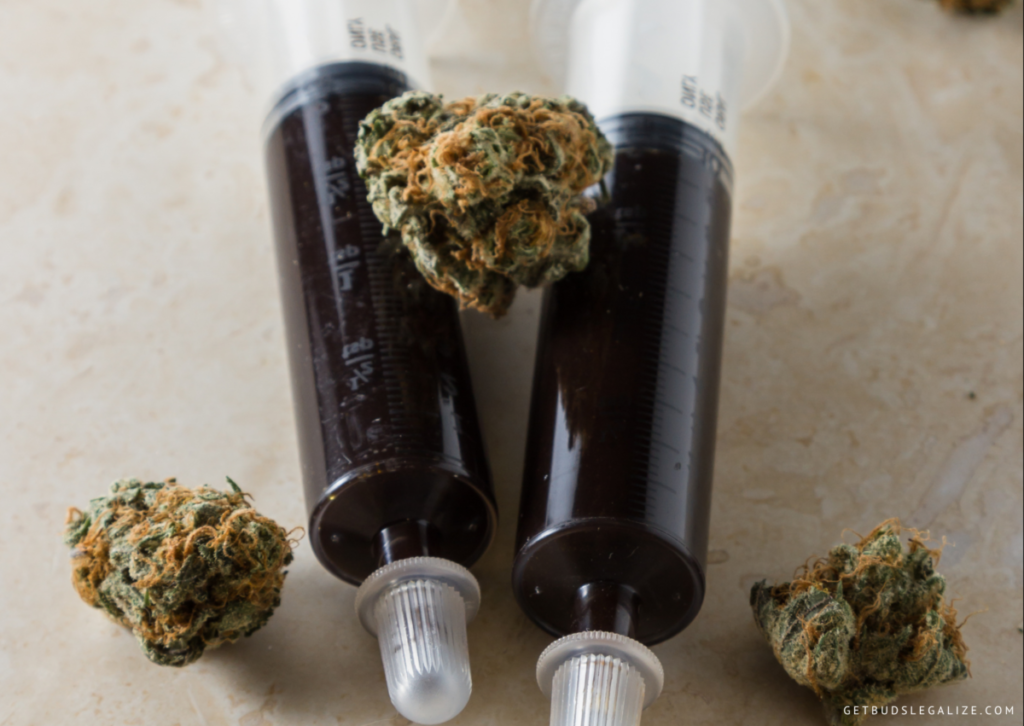
Making your personal RSO at home is not very difficult, but it does require some caution and safety measures. The process involves working with flammable liquids and high temperatures, so it is important to follow the instructions carefully and use the proper equipment. Here are some steps you must follow:
1. Gather the Materials:
You will need the following items:
- Cannabis buds or trimmings: You can use any of your favorite strains of medical cannabis, but indica strains are preferred for their sedative and relaxing effects. You will need about 450 grams of cannabis material to make about 60 grams of RSO.
- Ethanol or isopropyl alcohol: You will need about 8 liters of solvent to extract the oil from the cannabis. Make sure to use food-grade ethanol or 99% isopropyl alcohol, as lower grades may contain impurities that can harm your health.
- A large glass or ceramic mixing bowl: Do not use metal or plastic bowls, as they may react with the solvent or leach chemicals into the oil.
- A wooden spoon: You will use this to stir the cannabis and solvent mixture.
- A cheesecloth or coffee filter: You will use this to strain the liquid from the plant material.
- A rice cooker or a double boiler: You will use this to evaporate the solvent from the oil. A rice cooker is preferred, as it has a built-in thermostat that prevents overheating. Do not use an open flame or a stovetop, as they can cause a fire or explosion.
- A syringe or a glass dropper bottle: You will use this to store and dispense the oil.
2. Decarboxylate the Cannabis:
This step is optional, but it can increase the potency and bioavailability of the oil. Decarboxylation is a process that activates the THC and other cannabinoids in cannabis by heating them at a low temperature for a certain period of time. To decarboxylate the cannabis, follow these steps:
- Preheat your oven to 120°C (250°F).
- Break up the cannabis buds or trimmings into small pieces and spread them evenly on a baking sheet lined with parchment paper.
- Bake the cannabis for about 30 minutes, stirring occasionally to ensure even heating.
- Let the cannabis cool down before proceeding to the next step.
3. Extract the Oil from the Cannabis:
This step involves soaking the cannabis in the solvent and then separating the liquid from the plant material. To extract the oil from the cannabis, follow these steps:
- Place the cannabis in the glass or ceramic mixing bowl and pour enough solvent over it to completely cover it.
- Stir the mixture with the wooden spoon for about 3 minutes, making sure to break up any clumps and release as much oil as possible from the plant material.
- Place the cheesecloth or coffee filter over another large glass or ceramic bowl and pour the liquid through it, squeezing out as much solvent as possible from the plant material.
- Discard or compost the plant material and repeat steps 1 to 3 with fresh solvent until you have extracted all of the oil from the cannabis. You should end up with about 2 liters of liquid.
4. Evaporate the Solvent from the Oil:
This step involves heating up the liquid until all of the solvents have evaporated, leaving behind a thick, dark oil. To evaporate the solvent from the oil, follow these steps:
- Transfer the liquid to a rice cooker or a double boiler and turn it on to a high setting.
- Monitor the liquid closely and stir occasionally to prevent burning or boiling over.
- As the liquid reduces in volume, lower the heat setting gradually until only a small amount of bubbling occurs.
- When there is no more bubbling and you see a thin film on top of the oil, turn off the heat and let it cool down slightly.
- Carefully transfer the oil to a syringe or a glass dropper bottle and store it in a cool, dark place.
How to use RSO Oil Syringe?
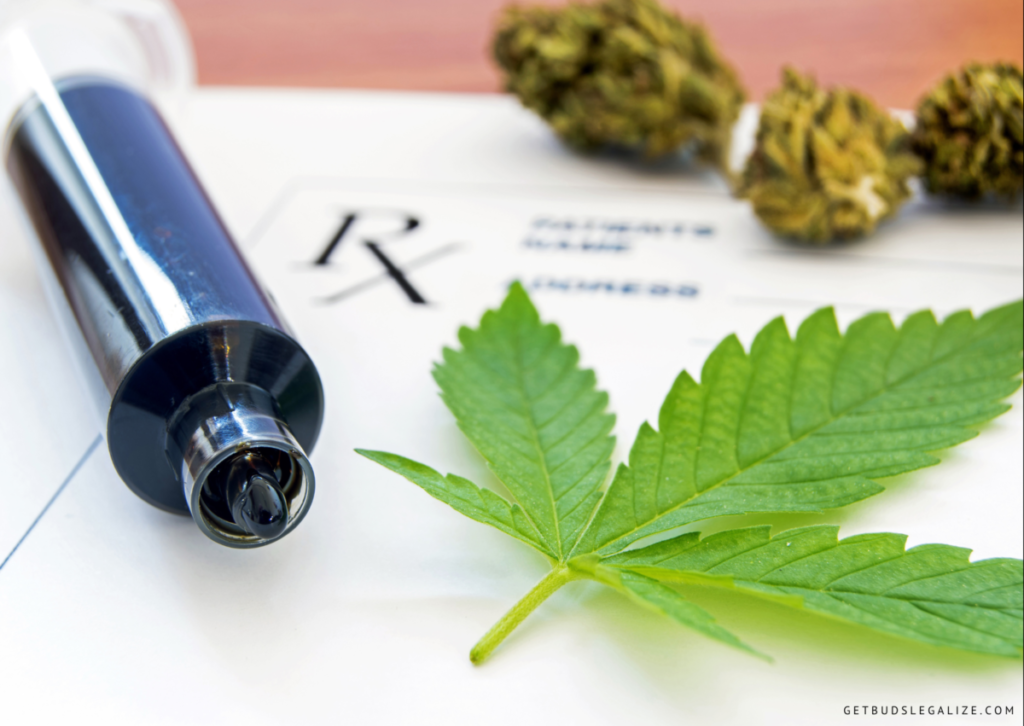
RSO oil is a thick, dark, tar-like substance that can be consumed orally, applied topically, or mixed with food. To use a syringe, follow these steps:
- Fill a pot with water and heat it until it boils.
- Place the syringe with the RSO oil in a plastic bag and seal it tightly.
- Submerge the bag in the boiling water for a few minutes until the oil becomes liquid.
- Carefully remove the bag from the water and dry it off.
- Push the plunger of the syringe to expel any air bubbles.
- Turn the syringe upside down and pull the plunger back to draw the oil into the syringe.
- Turn the syringe right side up and push the plunger slightly to remove any excess oil.
- Place the tip of the syringe under your tongue and squeeze gently to release the oil.
- Hold the oil under your tongue for at least 60 seconds before swallowing.
What Are the Recommended Dosages for RSO?
There is no standard dose for RSO, as it depends on several factors, such as the potency of the product, the condition being treated, the individual’s tolerance, and the desired effects.
Some sources suggest starting with a very small amount (about the size of a grain of rice) and gradually increasing it over time until reaching a maximum of 1 gram per day. However, this may not be suitable for everyone, and some people may experience adverse reactions even at low doses.
The best way to determine the appropriate dose to use is to consult with a doctor who is familiar with cannabis and its potential benefits and risks. They can help you find a product that meets your needs and preferences, monitor your response and progress, and adjust your dose accordingly. They can also advise you on how to use RSO safely and effectively, such as by applying it topically, ingesting it orally, or using it as a suppository.
RSO dosing is not a simple or straightforward process, and it should not be done without proper medical supervision. RSO is not a cure-all or a miracle drug, and it may not work for everyone or for every condition. It is important to weigh the pros and cons of using RSO and to follow the recommendations of your doctor.
Conclusion
Congratulations, you have just made your own cannabis extract at home, following our RSO oil recipe, and using a simple and safe method. Now you can use it for various medical purposes, such as applying it topically to treat skin conditions, ingesting it orally for pain relief, or adding it to food or drinks for a potent high.
Remember to start with a very small dose, as RSO is very strong and can have intense effects. Consult your doctor before using it, especially if you have any medical conditions or are taking any medications.
Rso Oil Recipe - FAQs
RSO is usually consumed orally, either by placing a drop under the tongue or by mixing it with food or drink. Some people also apply RSO topically to treat skin conditions or pain. However, there is limited scientific evidence to support the safety and efficacy of RSO for any medical condition. RSO may also have serious side effects, such as intoxication, impaired cognition, anxiety, paranoia, and increased heart rate. Therefore, it is advisable to consult a doctor before using RSO and to start with a very low dose and increase gradually if needed.
RSO is a marijuana extract that contains high levels of THC and other cannabinoids. It is usually made with a solvent like ethanol or isopropyl alcohol. To make RSO with Everclear, high-proof grain alcohol, you will need the following:
- Cannabis buds or trimmings
- Everclear
- A glass jar with a lid
- A coffee filter
- A rice cooker
- A syringe or dropper bottle
The steps are as follows:
- Break up the cannabis material into small pieces and place them in the glass jar.
- Pour enough Everclear to completely cover the cannabis and close the lid.
- Shake the jar vigorously for a few minutes and then let it sit for a few hours or overnight.
- Strain the liquid through a coffee filter into another glass jar and discard the plant material.
- Transfer the liquid to the rice cooker and set it to the lowest heat setting.
- Let the alcohol evaporate until you are left with a thick, dark oil. This may take several hours depending on the amount of liquid and the temperature of the rice cooker.
- Turn off the rice cooker and let the oil cool slightly.
- Use a syringe or dropper bottle to collect the oil and store it in a dark, cool place.
You have just made your own RSO with Everclear. Be careful when using this oil as it is very potent and can cause psychoactive effects. Always consult your doctor before using RSO for medical purposes.
You can find it for sale online at https://buyricksimpsonoil.com/

